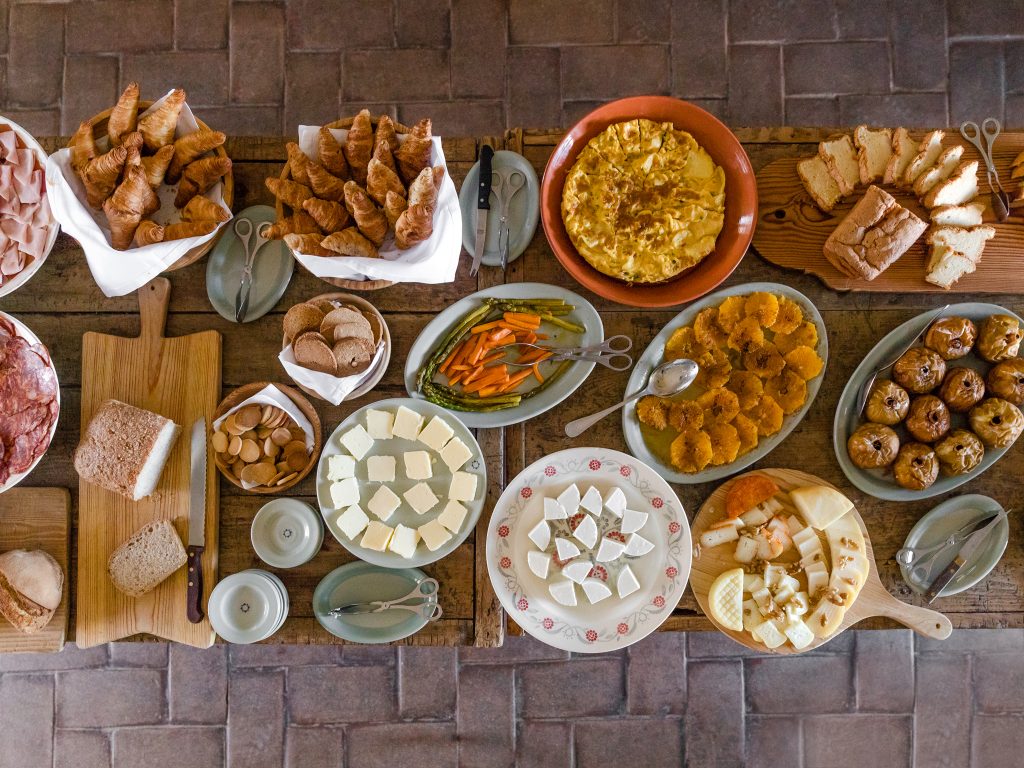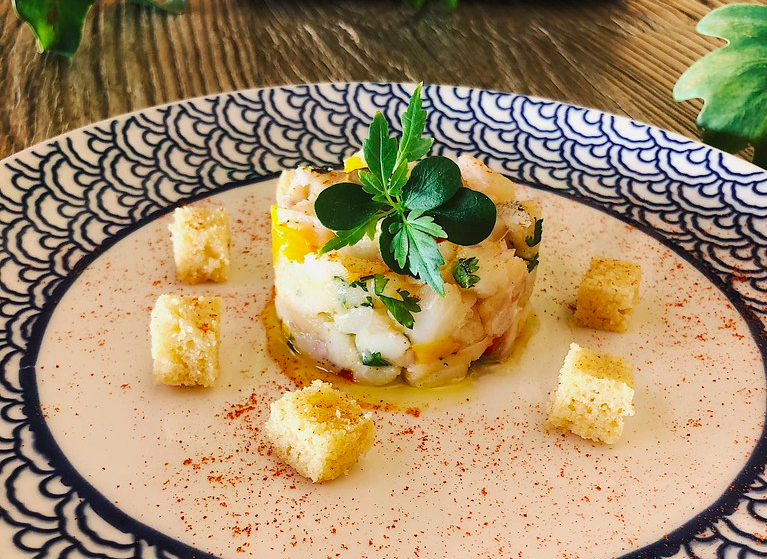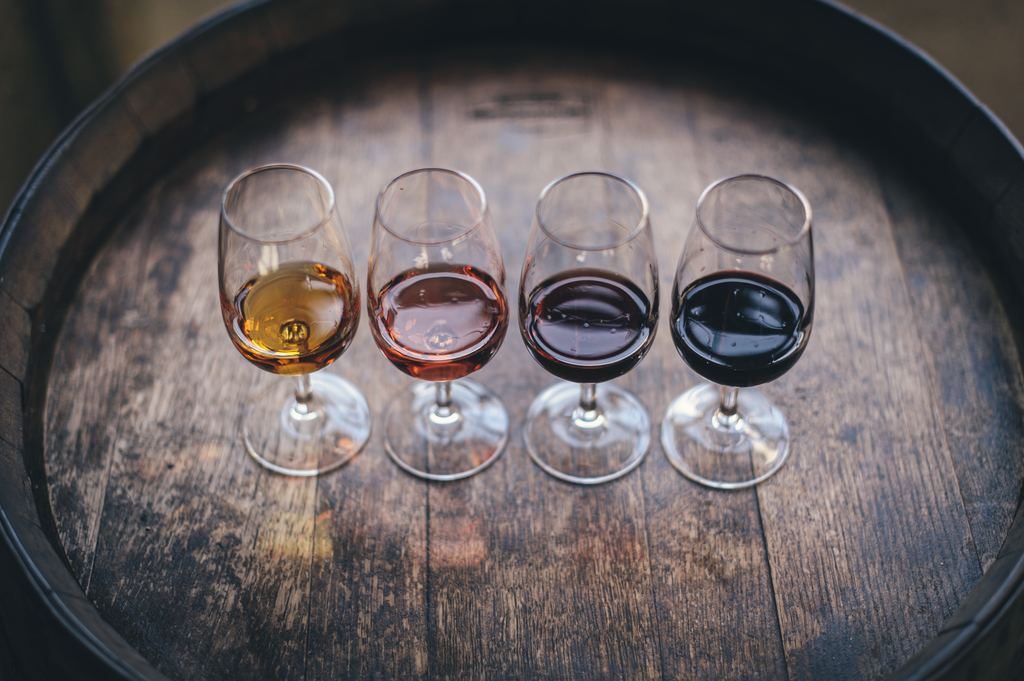A Taste of Portugal

Food just isn’t part of culture in Portugal, it is the culture and sampling the local delights is the best way to embrace the countries unique charm. Whether that’s by tasting the pastries distinctive to a singular town or region, sampling the freshest seafood along the coastlines, cooking up a traditional Cataplana, or engaging in discovery with a cooking class in a remote Alentejo garden, we have no doubt your first sample is going to be a tasty one.
There are so many dishes and varieties especially between regions, you’d have to spend a long time here to be able to sample them all, and we’re always discovering new dishes every day! To make things easier, we’ve given our take on some of our favourite culinary specialities unique to Portugal, where to get them, and how to taste them in the best possible way.
Pastel de Nata
How a local consumes a pastel de nata is serious business, you’ll find each person has their own unique way of getting their custard tart fix and we suggest trying out every single way because yes… it really does make a difference.
In the Algarve, Sally, our resident foodie guide told us the only way involves three elements, an espresso, a pastel de nata and a small spoon. “First, you use the spoon to dig out the custard, and savour every part of the creamy interior until all you have left is the crunchy base. After you take your espresso to wash down the overly sweet custard with the bitter bite of the dark roast coffee. Then finally, you eat the crunchy base, a satisfying palette cleanser to balance your tasty treat.”

Yet in Porto, whilst the pastel de nata and espresso rule stays, the tart is completely different. With the best being from Manteigaria, a resident competitor to the original down in Lisbon the pastry is thinner and crispier, yet the cream is thick, indulgent and offers just the right hint of sweetness. Traditionally served warm, this tart is so good it even tastes great when consumed cold. But you always know when they’ve been made fresh, as the staff will ring a bell so you have the chance to taste the freshest batch, still hot from the oven.
In Lisbon, at Pastéis de Belém with its bright blue and white coloured azulejos littered walls, and bustling lively atmosphere with waiters balancing seven plates on one arm to serve the tables of over 400 covers, you can really feel the atmosphere. We would always suggest ignoring the line at the front of the Pastelaria and instead venture to the back to wait for a seat to have the full authentic experience. And finally the taste, perhaps the most impressive element of all the original Pastéis de Nata is slightly smaller, perfectly charred and its flavour intensified with the knowledge that only 6 people know the recipe that has existed since 1837. And despite the branch making an impressive 20,000 pastries a day… you never get a bad tart here, served with a cold glass of Moscatel from Setúbal its the ultimate custard tart tasting experience.
Bacalhau
Locals muse that there are 365 ways to consume Bacalhau (salted cod), one for each day of the year so that they never have to go without it. Contrary to popular belief, bacalhau is not caught from just off the Portuguese coast, but instead in the colder waters near Norway and Iceland and dates back to Portugal’s adventurous years during their Age of Discovery throughout the 15th – 18th centuries, and was a staple food source for Portuguese sailors. This would explain why it’s common to find it hanging dry and salted from the ceiling so that the fish can maintain a better shelf life during its import.
Whilst we’re slowly making our way through the long recipe list, the top tastings include Bacalhau à Brás, where the first is shredded and bound with eggs and small match-stick pieces of potato, the locals use staple ingredients of high quality olive oil and parsley to give the dish it’s award-winning flavour.

For a quick pick-me-up savoury snack, we’d argue you can never go wrong with a Pastéis de Bacalhau, a small fried fish cake, which is especially popular during Portuguese holidays at Christmas and Easter as a side to even more dishes incorporating bacalhau. It’s a staple snack to find at a bar and is often consumed alongside a small Cerveja (Portuguese Beer- we’d always suggest a Super Bock) or for something with more of an acidic kick, a refreshing tall glass of Vinho Verde (green wine).
For those seeking the most indulgent Bacalhau tasting experience, we’d suggest the Portuguese take on the humble fish pie- Bacalhau com nata (cod in cream) is a heavy cream-based dish baked in the oven with potatoes and onions, often served with a side of steamed vegetables to lessen the guilt.
Wine
Portugal is home to 14 different DOC wine regions, all offering their own completely unique and distinctive tastes as a result of the lay of the land and its climatic influences. Portugal is the 11th largest wine producer in the world, given the small spread of land it occupies in comparison to its larger neighbouring countries such as Italy and Spain, this really is quite impressive!
Outside of Portugal, the Douro is the most highly regarded for being the oldest demarcated wine region in the world, and the only region to produce the famous Port Wine. Not only stunning for its vineyard-covered valleys, the region also produces fantastic varieties of red and white grape-based wines, with our most popular vineyards being Quinta do Pôpa, for a delicious tasting of rich reds with a panoramic view. Another favourite to visit is Quinta de la Rosa, a special spot as its one of the only Quintas to still store Port in the Douro as opposed to down the river at the Port houses in Vila Nova de Gaia, Porto.
As for the locals favourites… two popular wine regions are Alentejo (also Portugal’s cork producing region) where it’s famously impossible to get a poor tasting full-bodied, plump and delicious red, Alentejo reds are always on the dinner table in a Portuguese household. For summer months, the locals immediately go for a Vinho Verde which translates as green wine (although the colour does not give this impression!) a crisp, vibrant and acidic young mineral white wine that pairs perfectly with the sardine season.
Our favourite way to discover Portugal is through its vines and we offer a unique experience in Lisbon with an expert sommelier visiting her wine flat. Here she gives a tailored tasting based on your destinations of travel inside Portugal (as well as a few extras that you can’t miss out on sampling!)

Porco Preto
Directly translating at ‘Black Pork’ it’s one of the Portuguese most loved dishes with its name resonating from the dark-toned hue of the Iberian pigs skin. The Iberian pigs thrive mostly in Alentejo where they gorge on acorn from the neighbouring cork trees which the Portuguese believe adds the unique nutty flavour to the cuts of meat. Black pork isn’t for the faint-hearted, with a higher fat content than most other pig varieties and incredibly indulgent flavour… although locals argue it’s the healthiest variety of pork due to the pig’s strict acorn diet.
The best way to have this dish is grilled fresh using local olive oil, served with chips and salad (and usually a portion of rice for good measure). For those looking for a more subtle tasting, it’s possible to try the cured version pata negra and it’s easy to find this on most Portuguese charcuterie boards, paired with an excellent local cheese selection.
Queijo Serra da Estrela
The Serra da Estrela cheese is one of the oldest in Portugal, with its initial production dating back to the Romans who occupied the mountains during this period. Its first factory was created in 1287 by King Dom Diniz, and the taste for this cheese spread across to the rest of the Portuguese regions from there.
What’s most unique about this sheep cheese is its soft, buttery texture. Our favourite way to sample the delicacy is by cutting the top off its harder exterior to open up to the mouth-watering creamy interior… like opening a can, but the whole thing is edible! We like to dip in fresh cornbread and add a spoonful of quince for good measure, and we can assure it will be difficult to resist double-dipping with this delicacy!
For the ultimate cheese lovers, the best time to visit Portugal is in February or March where they host the annual Serra da Estrela Cheese Festival in a small town just east of the national park called Oliveira do Hospital. The festival has existed for the last 28 years and shows no signs of slowing down, it’s two days full of tastings of cheese and other regional delicacies as well as musical entertainment and performances. Epic can assist with transfers and guides to take you to the mountains for a cheese festival experience, whilst also incorporating some outdoor activities to lessen the guilt of indulging in the regional delicacy!
.
It’s fair to say that there really is a culinary delight for everyone to sample in Portugal and in major cities such as Lisbon and Porto, there are plenty of options available to accommodate dietary needs. We say the best way to experience a culture is through its cuisine, you learn so much about the country, not just the food.
For more information on how Epic can tailor-design a Portugal trip around your foodie interests, or add in a foodie element, get in contact with on of our Travel Planners at info@epic.travel.